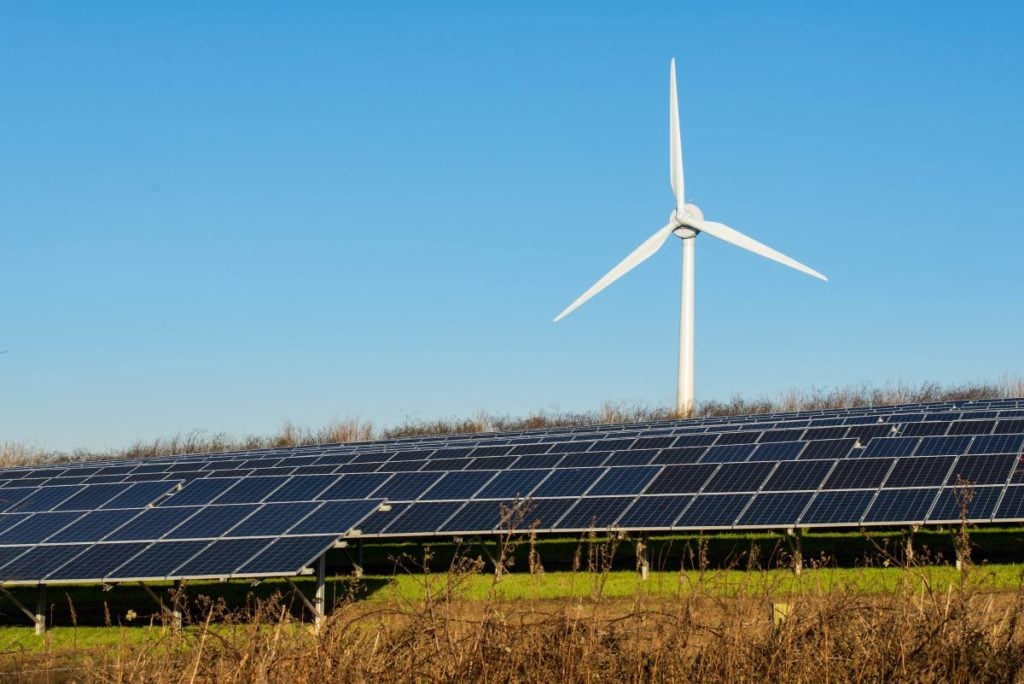
The US Federal Energy Regulatory Commission (FERC) has approved the PJM Interconnection’s proposal to fast-track up to 50 projects, which could favour gas-fired power plants over renewables.
According to environmental organisation Sierra Club this decision could also increase the costs for renewable energy sources that are in the PJM interconnection queue, some of which have been waiting for a grid connection for over six years.
Try Premium for just $1
- Full premium access for the first month at only $1
- Converts to an annual rate after 30 days unless cancelled
- Cancel anytime during the trial period
Premium Benefits
- Expert industry analysis and interviews
- Digital access to PV Tech Power journal
- Exclusive event discounts
Or get the full Premium subscription right away
Or continue reading this article for free
In response to the FERC decision, Megan Wachspress, staff attorney at Sierra Club, said: “The Sierra Club has advocated tirelessly for PJM to expedite its interconnection process to get more renewable energy online, which would lower energy costs for its millions of customers and reduce pollution across 13 states.
“PJM is still resisting reforms and has legally challenged a FERC order that would speed up the interconnection process.”
Non-profit environmental advocacy group the Environmental Law & Policy Center (ELPC) raised similar concerns which were included in FERC’s order, accessible here.
ELPC argued that PJM’s scoring system would favour specific resource classes, such as combined cycle gas, that “have electricity generation attributes that PJM prefers”.
This is despite gas-fired power plants representing only 6% of the total capacity in the PJM interconnection queue. Solar PV alone represented nearly 150GW of interconnection queue – numbers for PJM only – at the end of 2023, according to Lawrence Berkeley National Lab’s yearly report on queued-up capacity in the US, which was published last year.
One-time initiative adding at least 10GW of capacity
PJM’s fast-track interconnection plan would be implemented through a one-time Reliability Resource Initiative (RRI) for projects that are “shovel ready” and were already in the queue. It will further accelerate the development of these 50 projects which could save at least 18 months.
The application window for projects under RRI will open on 28 February and closes on 14 March 2025. The RRI process is open to generation interconnection requests from all types of resources with a minimum 10MW of unforced capacity (UCAP) with no limits in terms of applications.
PJM said that the proposals will be scored according to market impact criteria – UCAP, Effective Load Carrying Capability and zonal need – and commercial operation date viability.
In its decision, the FERC Commission argued: “We find that the proposal reasonably addresses the possibility of a resource adequacy shortfall driven by significant load growth, premature retirements, and delayed new entry.”
This shortfall of capacity, mentioned by the FERC Commission, could sum up to a 10GW gap by 2030/2031 and even up to 26GW gap depending on a 2025 forecasted load growth analysis, according to the FERC order. A study from PJM stated that by 2030 up to 40GW of existing installed capacity could be retired.
“This one-time initiative should provide a much-needed on-ramp to the reliability of the PJM system in the short term as we continue to move existing queued projects through our transition cycles,” said Chris O’Hara, senior VP and general counsel at PJM. “We now hope to see suppliers take advantage of this unique opportunity.”
Moreover, this one-time initiative comes as PJM’s ongoing reform of its interconnection process aimed to be more efficient and changing from a first-come, first-served queue process to a first-ready, first-served approach.
Started in July 2023 and still ongoing, the interconnection process reform aims to process over 200GW in generation projects across all technologies by 2026, when it expects to complete said process. Currently, there are already 50GW of projects that have gone through the PJM study process which are ready for construction, interconnection and operation, according to PJM.
The Regional Transmission Organisation (RTO) covers 13 states – including Pennsylvania, Virginia, New Jersey and Michigan among others – in the north-east of the US and the District of Columbia.






